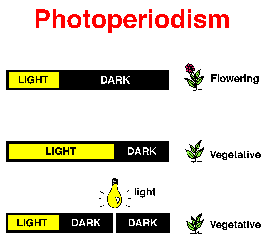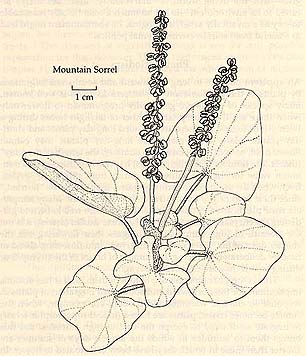![]()
![]()
Many species around the world possess the genetic phenomena termed photoperiodism. These species respond to day length to control many activities, among them being the flowering of various species. This ability to respond to day length is linked to an inner light sensitive circadian rhythm.
 There
are both long and short day plants:
There
are both long and short day plants:
EX- Many arctic plants cannot flower until the length of day light hours has reached at least a minimum value (long day plants). This means that warmer temperatures will not result in early flowering of the species, as it is dependent on light hours. Many temperate zone plants are short-day plants, where the shorter days of fall act as a trigger for flowering.
This has obvious implications for plant migration. Major climate changes move species up and down in latitude, resulting in a change in light hours.
 Studies
of these species have shown that they do survive the latitude
migrations. It seems that they have local genetic races which can
adapt to the new length of day light hours. This is seen for example
with the Mountain Sorel flower, which is found in both the high
arctic and in the alpine tundra
(E.C. Pielou,
1991).
Studies
of these species have shown that they do survive the latitude
migrations. It seems that they have local genetic races which can
adapt to the new length of day light hours. This is seen for example
with the Mountain Sorel flower, which is found in both the high
arctic and in the alpine tundra
(E.C. Pielou,
1991).

E.C. Pielou, 1991